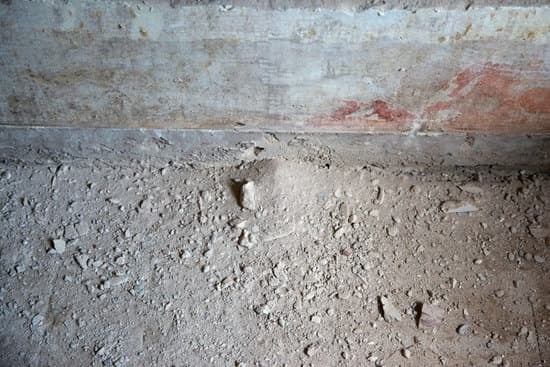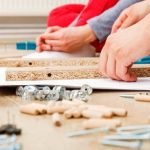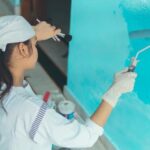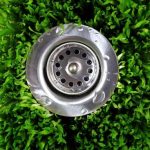Struggling with poor radio reception on your home stereo system? Learn how to improve home stereo radio reception with these helpful tips and techniques. Good radio reception is essential for enjoying clear and high-quality sound from your favorite stations. However, many homeowners experience common issues such as static, interference, and poor signal strength that can disrupt their listening experience.
Understanding the factors that can affect radio reception is crucial in finding solutions to improve it. Factors like distance from the radio station, interference from other electronic devices, and the quality of your equipment all play a role in the clarity of your radio signal. By examining each factor and its impact on reception, you can better identify areas for improvement in your home stereo system.
In this article, we will explore various methods for improving home stereo radio reception. From inspecting and adjusting your existing equipment to considering upgrades and minimizing interference, there are plenty of steps you can take to enhance the quality of your radio signal at home. Whether you’re experiencing static or weak signals, these tips will help you troubleshoot and maintain consistent and high-quality reception for an enjoyable listening experience.
Understanding the Factors Affecting Radio Reception
When it comes to home stereo radio reception, there are several factors that can impact the quality of the signal received. Understanding these factors is essential in troubleshooting and improving radio reception.
Some of the major factors affecting radio reception include:
- Distance from the radio station: The farther you are from the station, the weaker the signal will be.
- Interference: Electronic devices, power lines, and other obstructions can cause interference and disrupt radio signals.
- Equipment quality: The quality of your stereo system and antenna can greatly affect reception quality.
Each of these factors can have a significant impact on the clarity and strength of your radio reception. By understanding how each factor plays a role in your specific setup, you can take targeted steps to improve your home stereo radio reception.
To improve home stereo radio reception, here are some tips for adjusting equipment:
- Inspect and clean your equipment regularly to ensure optimal performance.
- Adjust the position and length of your antenna for better reception based on the location of nearby stations.
- Consider upgrading your current antenna to a higher-quality one for improved reception.
By taking these steps to adjust and optimize your equipment, you can make a noticeable difference in the quality of your home stereo radio reception.
Checking and Adjusting Equipment
When it comes to improving home stereo radio reception, one of the first steps is to check and adjust the equipment for optimal performance. This includes inspecting and cleaning the components of the stereo system, as well as making adjustments to the antenna position and length.
Inspecting the equipment involves checking for any loose connections, dust buildup, or damage to the antenna. Dust and debris can interfere with radio waves, so cleaning the equipment regularly can help improve reception. Additionally, ensuring that all connections are secure and that the antenna is in good condition is essential for better radio reception.
In addition to inspecting and cleaning the equipment, adjusting the antenna position can also make a significant difference in reception quality. Experimenting with different positions and angles can help find the best placement for optimal signal strength. Similarly, adjusting the length of the antenna may also improve reception, especially if it is designed to be adjustable.
| Equipment Inspection | Antenna Adjustment |
|---|---|
| Regularly check for loose connections, dust buildup, or damage to the antenna. | Experiment with different positions and angles to find optimal signal strength. |
| Clean equipment regularly to remove dust and debris that can interfere with radio waves. | Adjust antenna length for better reception. |
Upgrading Equipment
When it comes to improving home stereo radio reception, one of the key factors to consider is the equipment being used. Upgrading the radio antenna can significantly enhance the quality of reception. Here are some options to explore for upgrading the radio antenna:
- Consider purchasing a high-quality external antenna specifically designed for home stereo systems. These antennas are often more powerful and can pick up a stronger signal, resulting in clearer reception.
- Another option is to invest in a multi-directional or omnidirectional antenna, which can receive signals from multiple directions, minimizing the impact of interference and improving overall reception quality.
In addition to upgrading the antenna, it’s also worth considering upgrading the stereo system itself for better reception. This could involve investing in a more advanced receiver or amplifier that is designed to optimize radio signal reception.
Ultimately, upgrading equipment is an effective way to improve home stereo radio reception by maximizing the capabilities of both the antenna and the stereo system.
Lastly, it is important to consult with experts before making any upgrades to ensure compatibility and optimal performance. Making informed decisions when upgrading equipment will ultimately lead to better radio reception for your home stereo system.
By exploring these options and considering upgrades, you can take proactive steps towards improving your home stereo radio reception. Investing in high-quality equipment will not only enhance your listening experience but also ensure consistent and reliable signal reception for years to come.
Minimizing Interference
When it comes to achieving the best possible radio reception for your home stereo system, minimizing interference is crucial. Interference can come from a variety of sources, including electronic devices like cell phones and microwaves, as well as physical obstructions like buildings and trees. These sources can disrupt the radio signal and result in poor reception or static-filled sound.
To minimize interference, start by identifying potential sources of disruption in your home. Keep electronic devices away from your stereo system and try repositioning them if necessary. Additionally, consider rearranging furniture or using signal-boosting devices to reduce the impact of physical obstructions on radio reception.
It’s also worth noting that the quality of cables and connectors used in your stereo system can affect interference levels. High-quality shielded cables can help minimize external interference, while properly grounded connectors can reduce internal interference within the system. By paying attention to these details, you can effectively minimize interference and improve your home stereo radio reception.
| Interference Source | Minimization Technique |
|---|---|
| Electronic Devices | Keep them away from stereo system; reposition if necessary |
| Physical Obstructions | Rearrange furniture; use signal-boosting devices |
| Cables and Connectors | Use high-quality shielded cables; ensure proper grounding of connectors |
Using External Antennas
Exploring the Benefits of External Antennas
One effective way to improve home stereo radio reception is by using external antennas. External antennas are designed to capture radio waves more efficiently than built-in antennas, resulting in better signal quality and stronger reception. They can be particularly beneficial for individuals living in areas with weak radio signals or heavy interference.
External antennas also offer the advantage of being able to be placed in a more optimal location for capturing radio signals, as they can be installed outdoors or in higher positions within the home. This flexibility can help to minimize the impact of factors such as physical obstructions and electronic interference on radio reception, leading to a clearer and more consistent listening experience.
Tips for Selecting and Installing External Antennas
When selecting an external antenna for your home stereo system, it is important to consider factors such as the frequency range of the antenna, its compatibility with your stereo equipment, and any specific requirements based on the radio stations you listen to. Researching different types of external antennas and seeking advice from audio professionals can help ensure that you choose the best option for your needs.
Proper installation of an external antenna is crucial for maximizing its effectiveness. This may involve securing it at an appropriate height or angle, connecting it properly to your stereo system, and positioning it away from potential sources of interference. Following manufacturer instructions and seeking professional assistance if needed can help ensure that your external antenna is set up correctly for optimal performance.
By utilizing external antennas for home stereo radio systems, listeners can enjoy benefits such as clearer sound quality, fewer interruptions during playback, and access to a wider range of radio stations. The enhanced reception provided by external antennas can significantly improve the overall listening experience, making them a valuable investment for individuals looking to optimize their home stereo setup.
Researching and Utilizing Radio Repeaters
Radio repeaters play a vital role in improving radio reception, especially in areas with poor signal coverage. For individuals looking to enhance their home stereo radio reception, understanding and utilizing radio repeaters can make a significant difference in the quality of the broadcast. This section will explore the concept of radio repeaters and provide guidance on how to research and utilize them for improved reception at home.
Explanation of Radio Repeaters
Radio repeaters are electronic devices that receive weak or low-power radio signals and retransmit them at a higher power, extending the coverage area. These devices are commonly used in areas where the terrain or distance from the broadcasting station causes signal deterioration, resulting in poor reception. Radio repeaters effectively amplify and redistribute radio signals, enhancing the overall reception quality for listeners within their coverage area.
Researching Radio Repeaters
When dealing with poor home stereo radio reception, researching available radio repeaters in your area is essential. Online resources such as websites dedicated to amateur radio operators or community forums may provide information on existing repeater locations and frequencies. Additionally, reaching out to local amateur radio clubs or enthusiasts can offer valuable insights into nearby repeater installations that could improve your home stereo radio reception.
Utilizing Radio Repeaters for Improved Reception
Once you have identified suitable radio repeaters in your vicinity, programming the frequencies into your home stereo system is essential. Many modern radios allow users to input specific frequencies for easy access to enhanced signal coverage provided by these repeaters. By utilizing these programmed frequencies, you can leverage the capabilities of nearby repeaters to significantly improve the overall quality of your home stereo radio reception.
Understanding and using radio repeaters is a valuable strategy for individuals seeking improved home stereo radio reception. By familiarizing yourself with these devices, researching available options, and utilizing programmed frequencies, you can optimize your listening experience by accessing enhanced signal coverage provided by local repeater installations.
Troubleshooting and Maintenance
One common issue that can affect home stereo radio reception is interference. Interference can come from electronic devices and physical obstructions, causing a decrease in the quality of the radio signal. To minimize interference, it’s essential to identify the sources and take steps to eliminate or reduce them. Moving electronic devices away from the stereo system and adjusting the position of the antenna can help minimize interference and improve radio reception.
In addition to minimizing interference, troubleshooting and maintenance are crucial for ensuring consistent and high-quality radio reception. If you are experiencing issues with your home stereo radio reception, there are some common troubleshooting steps you can take. This may include checking for loose connections, inspecting the antenna for any damage, or ensuring that other electronic devices are not causing interference. Regular maintenance of your equipment, such as cleaning and inspecting the components, is also important for optimal performance.
By implementing these troubleshooting and maintenance tips, you can effectively address any issues with your home stereo radio reception and ensure that you continue to enjoy clear and high-quality sound. Consistent maintenance will also help prolong the lifespan of your equipment and provide a better overall listening experience.
Conclusion
In conclusion, achieving good home stereo radio reception is crucial for enjoying high-quality sound and staying updated with news, music, and other programming. The factors that can impact radio reception, such as distance from the station, interference, and equipment quality, are important to understand in order to address any potential issues.
By checking and adjusting equipment, upgrading antennas and stereo systems, minimizing interference, using external antennas, researching radio repeaters, and implementing troubleshooting and maintenance techniques, it is possible to significantly improve home stereo radio reception.
I encourage readers to take the time to implement the tips and techniques mentioned in this article for improving home stereo radio reception.
By inspecting and cleaning their equipment regularly, adjusting antenna positions for better reception, considering upgrades to their radio antenna or stereo system, minimizing interference from electronic devices and physical obstructions, utilizing external antennas, researching radio repeaters in their area, and performing ongoing maintenance of their equipment; they can experience a noticeable improvement in their radio reception at home.
Consistent efforts in maintaining optimal radio reception will undoubtedly result in a more enjoyable listening experience for all types of programming.
By continuously striving to improve home stereo radio reception through various methods discussed in this article-readers can expect to consistently enjoy clear sound quality without interruptions. I hope that this concluding section serves as encouragement for all readers to take the necessary actions for enhancing their home stereo radio reception. Let’s not settle for poor quality-that’s what fast food is there for.
Frequently Asked Questions
How Do I Fix Poor AM Radio Reception?
There are a few steps you can take to fix poor AM radio reception. First, try repositioning the radio or the antenna to see if that improves the reception. You can also check the wiring and connections of the antenna to make sure everything is secure and properly connected.
Sometimes, simply adjusting the position of the antenna can make a significant difference in reception. If those steps don’t work, consider investing in an external antenna or a signal amplifier to boost your radio’s reception.
Does Aluminum Foil Improve Radio Reception?
Yes, aluminum foil can improve radio reception, especially when used as a makeshift antenna. By creating a basic shape out of aluminum foil and connecting it to your radio’s existing antenna, you may notice an improvement in reception quality.
The reflective properties of aluminum foil can help capture and amplify radio signals, making it a popular DIY solution for improving radio reception.
How Can I Improve My Radio Range?
Improving your radio range depends on various factors such as the type of radio and its antenna. One way to boost your radio range is by using a better quality and longer antenna that is positioned as high as possible to receive signals more effectively.
Additionally, using a signal booster or amplifier can extend the range of your radio by capturing weak signals and amplifying them for improved reception at longer distances. Experimenting with different antennas and equipment might help you find what works best for extending your radio range.

I’m thrilled to have you here as a part of the Remodeling Top community. This is where my journey as an architect and remodeling enthusiast intersects with your passion for transforming houses into dream homes.





